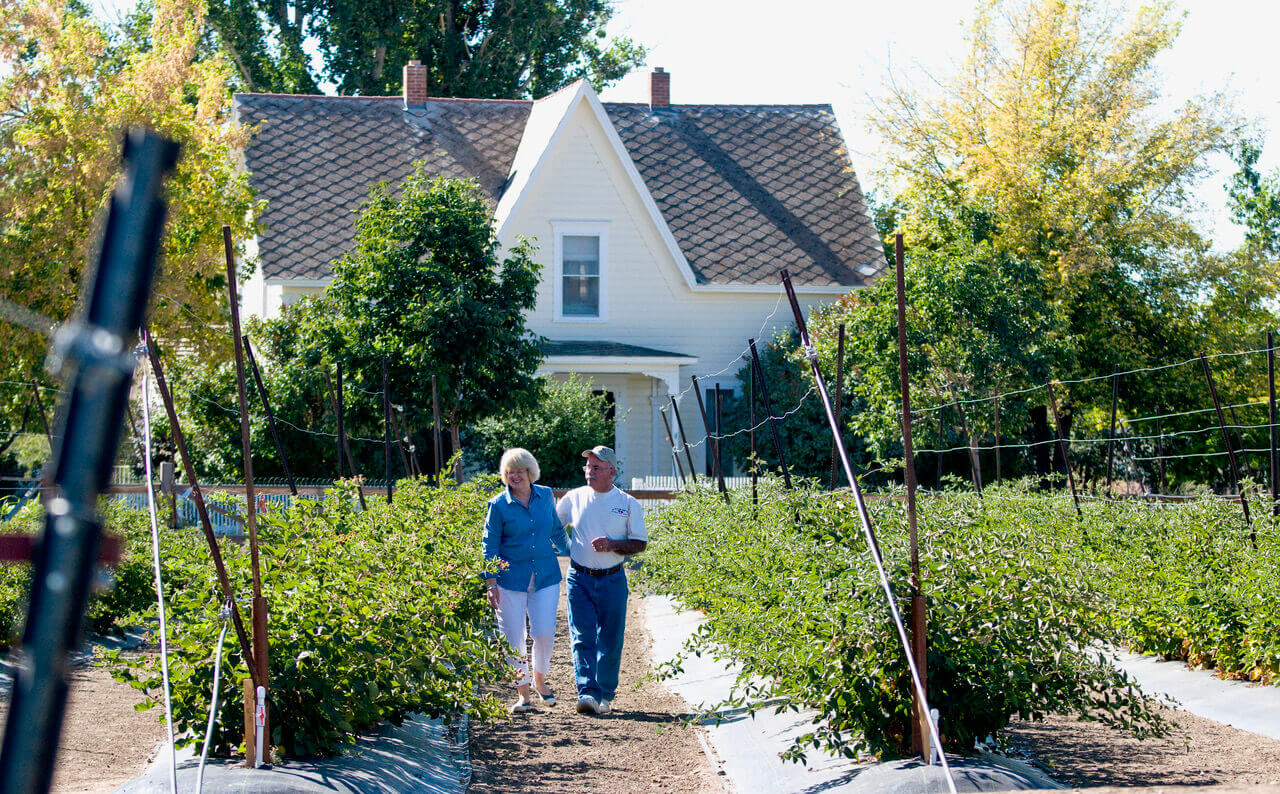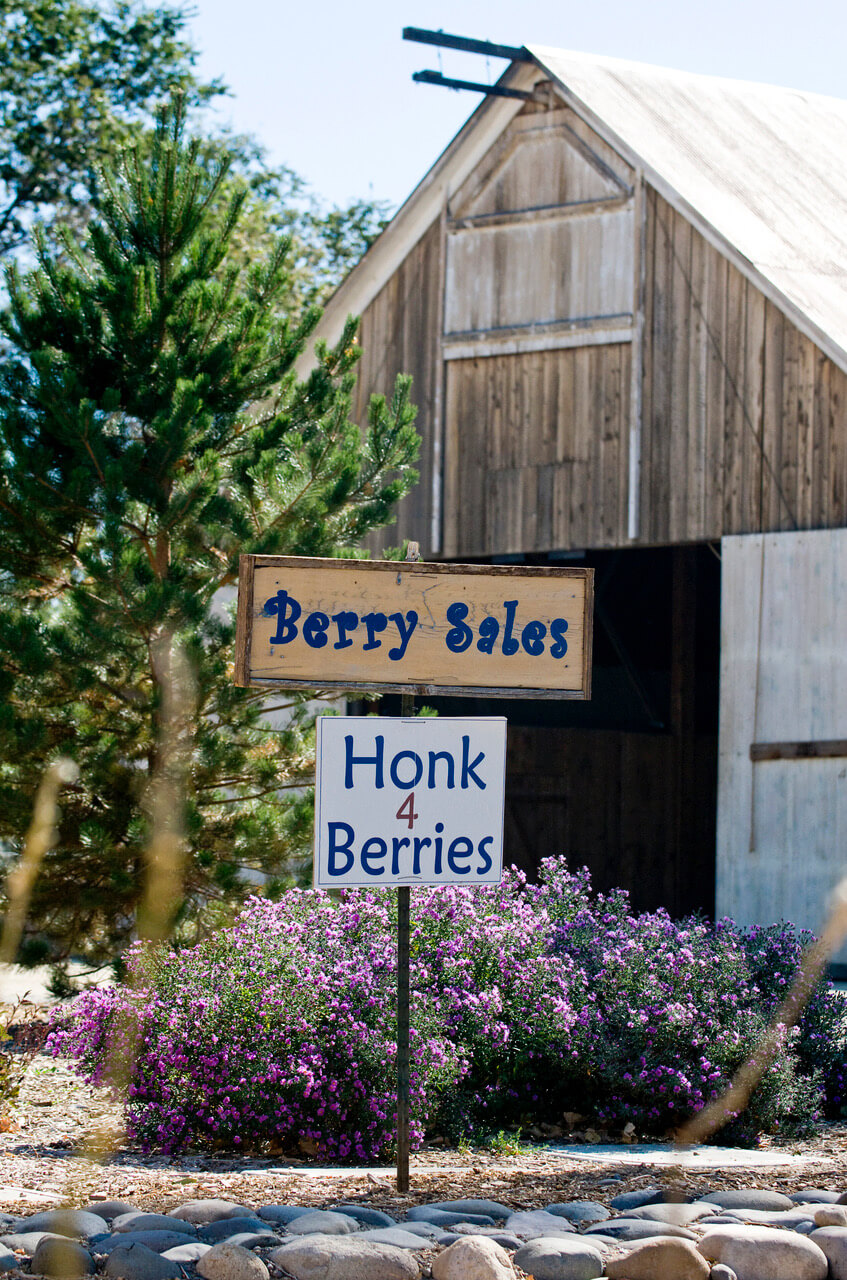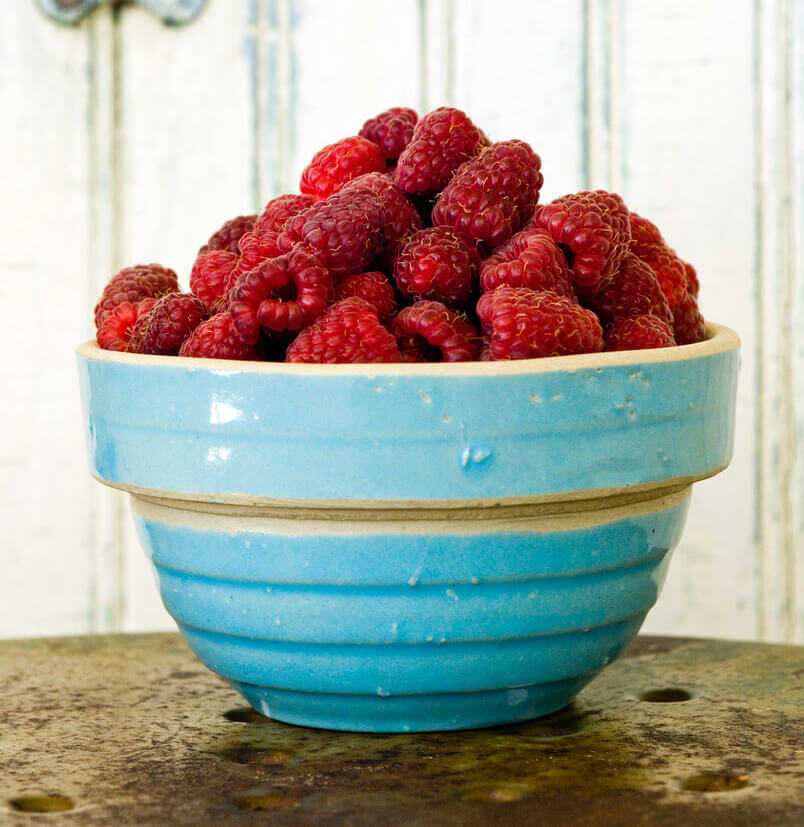meet the farmer
BERRY SUCCESSFUL FARMING
Uncovering the Charm of the Jacobs Family Farm.
WRITTEN BY SUE EDMONDSON
PHOTOS BY CANDICE NYANDO
When Jack and Diana Jacobs saw the listing for the historic Lampe farm in Gardnerville, they weren’t thinking “ideal berry-growing land with delightful setting for weddings and receptions.” They simply envisioned a place to retire, he from civil engineering and she from human resources. As antique and history lovers, they found the beautiful old farmhouse and original outbuildings — a barn, creamery, bunkhouses, and blacksmith shop, all with much equipment intact — simply irresistible.
New Ideas for Old Homestead
It wasn’t until they moved to the farm that they considered growing berries. Not ready for rocking chairs, they decided to make use of their land.
“There’d been alfalfa planted here, but there’s not much of a return on it,” Jack Jacobs says. “We could earn so much more with our five acres by planting a crop with a larger yield. Besides, who doesn’t like berries? They’re a delicious, healthy food.”
Still, they didn’t jump right in. With an engineer’s penchant for detail, he spent a year attending conferences, talking with growers, and studying. It took another year to sufficiently amend the soil for growing. Then, they enlisted their adult children and the grandkids to help plant.
Now, to see the land in production, you’d never know the family hadn’t farmed for generations. Irrigation is by drip, weeds discouraged with black plastic. Canes are trained on wire, held aloft with a recycled metal support system — Jacobs’ original design. The 16 varieties of blackberries and raspberries are in neat rows, situated to make best use of the elements.

Why it Works
Driving up to Jacobs Family Berry Farm during harvest season, from late summer to early fall, is a sensory pleasure. Visitors are welcomed with a sign that reads, “Berry Sales, Honk 4 Berries” at the head of a circular drive, the center colored with daisies, blanket flowers, alliums, and yarrow, and scented by lavender and sage. The white farmhouse, with its manicured lawn, roses, butterfly bushes, and fruit trees sits to the right; berries are to the left, the outbuildings toward the back.
Berry season on the farm runs from July through early October. Last year, Jacobs sponsored seven interns, one from Western Nevada College and six who were Douglas High School FFA students, to help handpick berries. They spent 180 hours learning everything from marketing to harvesting. With more than 1,000 plants in production, there’s plenty to do.
“Picking is an art,” Jacobs says.
This is one reason the farm isn’t a u-pick operation. He slides a blackberry off its stem.
“This one is perfect,” he says.

Indeed, the berry melts on the tongue, a rich burst of sweet-tart, deep berry flavor that resembles nothing found in most grocery stores.
“The critical measure is taste,” he adds. “It takes experience to connect the color, firmness, and ease of removal with the taste.”
No herbicides or pesticides taint the flavor or wholesomeness of the fruit. Production barely keeps up with demand.
“The word has gotten out,” he says. “When you make this business personal, you’re selling a discovery, an adventure. People love it and they keep coming back.”
In her spare time, freelance writer Sue Edmondson enjoys restoring old homes and growing fruit, vegetables, and flowers. She’s currently on the hunt for recycled metal to make a berry support system.
For details, visit http://www.Jacobsberries.com.

Mixed Berry Cobbler
(courtesy of chef Mark Brouillard, Fresco Café in Reno. Serves 9)
Filling
2 cups raspberries
2 cups blackberries
¾ cup sugar
¼ cup flour
Topping
2½ cups all-purpose flour
1 teaspoon salt
2 tablespoons baking powder
½ teaspoon baking soda
½ cup unsalted butter
2 cups buttermilk
Preheat oven to 350 degrees F.
Rub 2 tablespoons softened butter over surface of a 9-by-9-inch pan (Pyrex or ovenproof). Toss all filling ingredients in a bowl, coating well with flour, and fill pan.
To make topping, toss flour, salt, baking powder, and baking soda in a bowl or food processor until mixed well. Cut butter into cubes, and then cut into the flour mixture, or pulse in food processor, until butter is pea sized. Add buttermilk and toss lightly, just until mixed.
Spread topping evenly on top of berries and bake until cobbler is golden brown on top, about 40 to 50 minutes. Check with knife or toothpick to make sure crust is fully cooked. Serve with fresh whipped cream or ice cream


